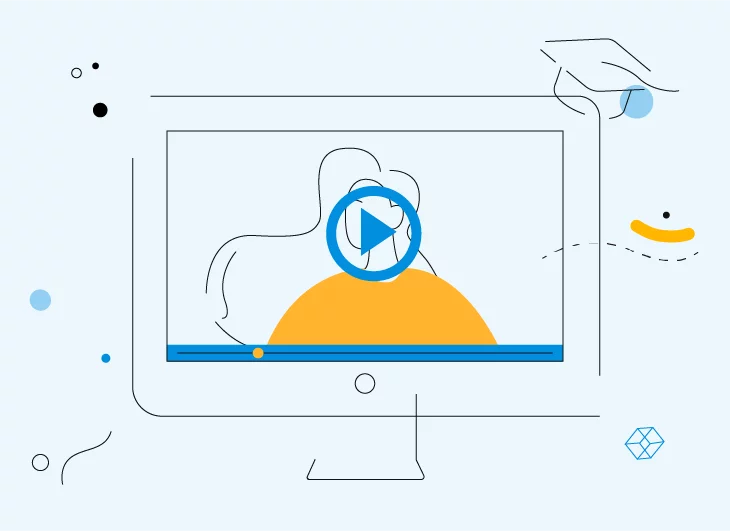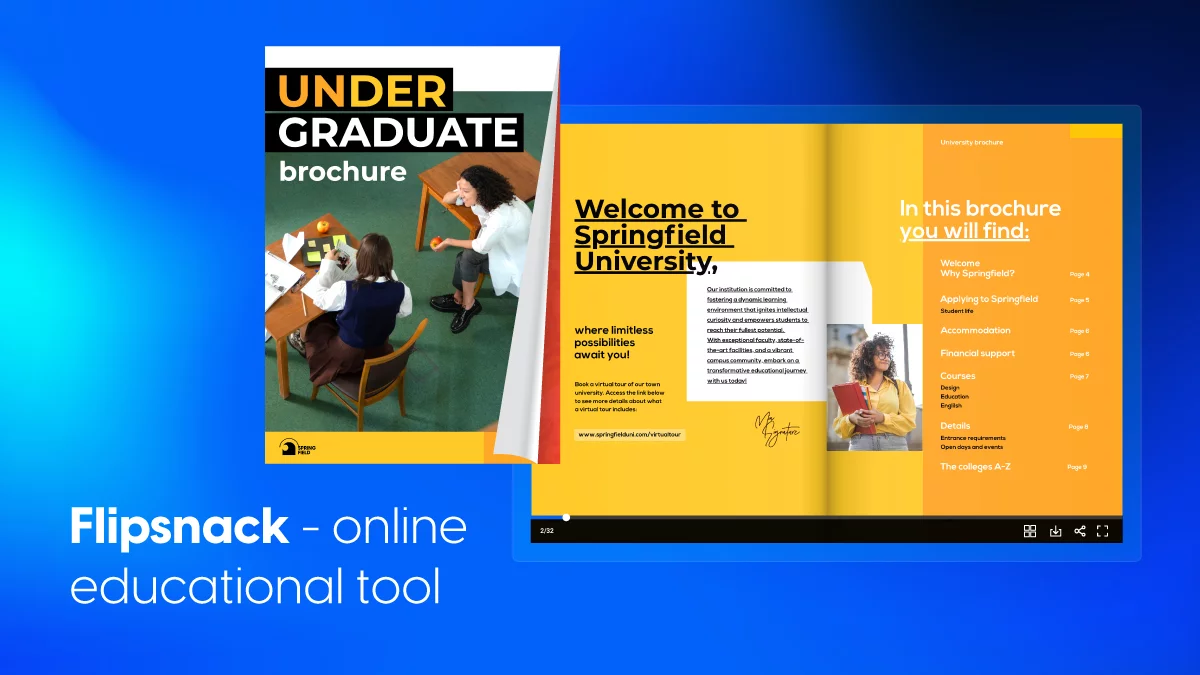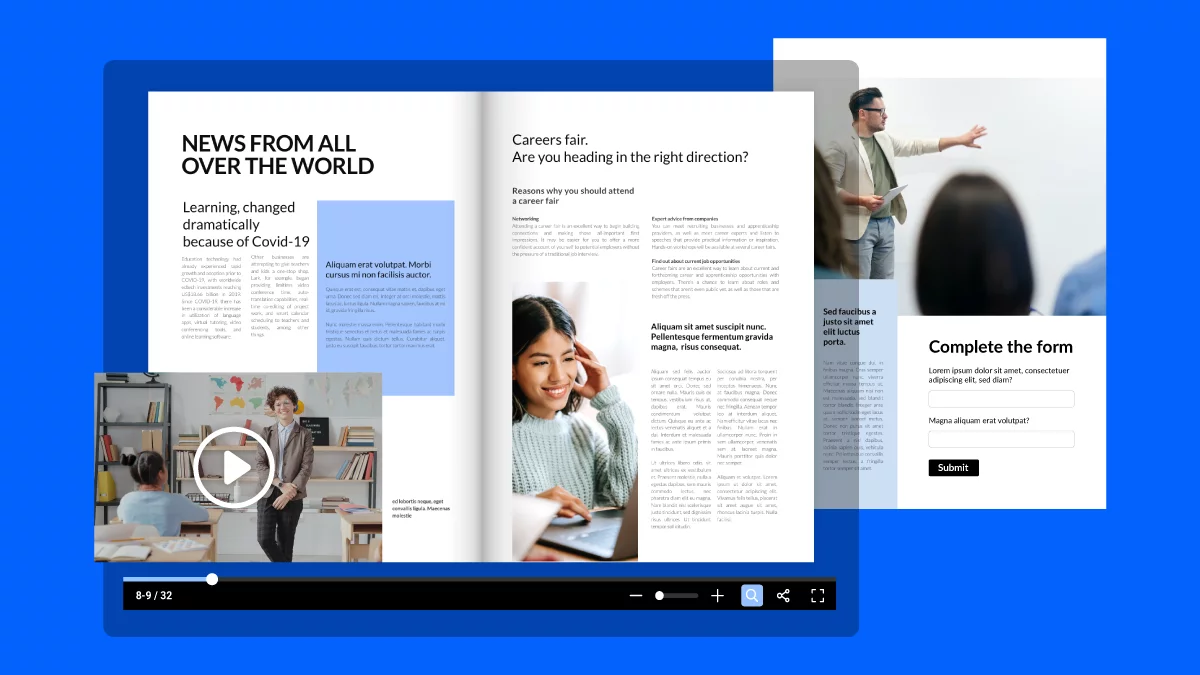How using videos for education changes the classroom
It’s no news that videos have played an important role in education for a while now. Studies have shown us that videos improve the learning process, help students retain information more easily; and rapidly understand complicated concepts. Not to mention the fact that videos make students more enthusiastic and curious about education. But do you know what’s really the best part about using videos for education? The fact that they take education to the next level. Videos take students on impossible field trips such as the human body or off to Jupiter, they illustrate abstract theories through animated and 3D images; and also bring literature, plays, music, paintings or important history scenes into the room.
If you’re a teacher and already implementing videos in your curriculum content, then you surely understand the benefits of all the things I’ve written above, and you’ll agree with the ones I’ll present later in this article. But on the other hand, if you’re that kind of educator that’s still holding out on taking advantage of these videos for education trends; then you really have to read this article from head to tail. It will convince you to start using videos in your lessons from now on and also explain thoroughly why videos are a crucial tool in the education field. Have I made you curious? Good. Then let’s get this journey started!
5 conceivable reasons why you should use videos for education
1. Videos grab students’ attention instantly

Every teacher’s purpose is to keep their students as animated and engaged as possible in the classroom, and clearly videos are the perfect tool in this regard. They generate a much greater amount of enjoyment and interest than any traditional printed material. Video lessons require creativity and real-world experiences; that’s why they keep students more interested and engaged. Therefore, a student who’s engaged in the classroom will participate more and be active in the lesson, disrupt class less; and remember what they have been taught longer than the students who weren’t as involved in the lesson.
Also, videos represent the best medium you can use if you want to speak with the new generation since kids all over the world enjoy watching all types of videos online in their free time. And because they expect to be visually stimulated even in the classrooms, very few of them respond well to only printed materials. Visual stimulation boosts students’ interaction with both content and concept, leading to bigger information retention. If you want to see your students more interested, stimulated and involved in your lessons; then you should definitely go for videos for education!
2. Videos facilitate learning

Throughout the years, research has shown us that using videos for education makes it a looot easier for students to understand various and complicated concepts and topics. Why? Because videos explain these things in a practical and realistic way. Let’s have an example. You’re teaching a lesson about the means of transport and you ask children to write a paragraph about an airplane. Kids who have never been on a plane would be clueless about this topic. But instead, if you show them a video of the interior of an airplane; they’ll all have a clear idea of the topic and they’ll all be able to write that paragraph. Isn’t this one of the greatest learning tools that a teacher can use?
Also, there’s no doubt that videos are filled with a great amount of information. That kind of information that students can absorb in an easy and enjoyable manner. This is what makes learning and teaching a great experience.
Many times educators use videos to not only keep students engaged; but also to share visuals of more complicated content. Sharing content related videos helps meet various student needs; such as visual and auditory learners as well as allowing information to be repeated as many times as a student may need to hear it. – Shanna Martin, middle school teacher, host of Tech Tools for Teachers Podcast
Another aspect that I want to add here is the fact that videos make learning accessible to every type of student. I’m referring here to children with special needs such as ADD/ADHD or conditions that require home-bound stints. Videos make it possible for all learners to enjoy educational materials from any place they might be. Just make sure to add the subtitles or transcripts for the hearing-impaired students.
3. Videos represent real-world applications
Like I’ve already mentioned before, videos are practical and represent real-world applications. Students will not just learn hundreds of paper materials by heart; but they will visualize real facts or representations. For example, you can show them history videos about wars, kings or queens; or you can show them a video of great museums or theater plays. In this sense, you’re offering them free visual tours or trips. All the benefits of exploring and experiencing without transportation and fees. Trust me, your school’s principal will consider you to be the perfect teacher.
But here comes the most important part regarding videos for education. You know what they say! Students work harder if they see the purpose of learning a new skill. After showing students some nice and well-made videos; they’ll be curious to learn how to make videos by themselves. And this is something they’ll remember and use their entire life. Students will be able to build videos for any type of assignment, portfolios, social media or even for their CV. So once again, this demonstrates how practical videos are in real-life.
4. Videos stimulate classroom’s activities

There’s no better stimulus for classroom activities than videos. Trust me, I know what I’m saying, I’ve been a teacher for almost four years. I’ve tried many methods to engage my students as much as possible and I’ve realized that the best solution is videos for education. They are much more fun and interactive than anything else. Students simply pay more attention and interest when they are seeing animated diagrams, step-by-step how-tos, and other video lessons. And both the classroom activities and school assignments become a fun thing to do.
Usually, video activities are often developed as group projects, so students have the possibility to work collaboratively and learn from each other in order to achieve the perfect outcome. Assembling a video strategy together unearths different students’ methods, ideas and ways of thinking and they discover how important teamwork and cooperation are. This leads to a well-balanced classroom and this is every teacher’s dream, right?
And the best is yet to come. These video activities made by students can be kept in a digital archive and be tracked online whenever they want to. In this way, they can see their progress and share their work with others. Or, why not, these videos can inspire future scholars.
5. Videos nurture students’ creativity

As a teacher, I’ve had the possibility to see the impact of videos on pupils’ lives. Besides being entertaining and fun to watch, videos for education let students create at a level that’s appropriate and enjoyable for them. For instance, a student whose video skills are only at the beginning can still create something to be proud of; while one whose skills are more advanced can focus on creating more complicated videos. School assignments or different projects that encourage students to create videos give them opportunities to improve their English language especially if they have difficulties with the writing part.
Another thing that should be mentioned here is the fact that videos also boost students’ active and independent learning. One of the best methods to make sure that children understood a topic is to let them explain it with their own words. By creating videos, they have the possibility to illustrate a concept in their own way. In this manner, they will learn and retain the information easily. It’s a much better solution than simply writing down a definition and repeating it over and over again until they remember it. Rather than just giving them quiz after quiz, challenge them to develop themselves creatively with the help of technology. Why not take advantage of such an important tool?
When students create videos, it helps them retain more knowledge and also engage in the lesson. Students can explain their learning in a video; and share it with their teacher or peers. Creating videos also allows students to present their knowledge to others beyond just those in their school and learn from others around the world. – Shanna Martin, middle school teacher, host of Tech Tools for Teachers Podcast
Wrapping it up
Here we are, at the end of this journey. I really hope today’s article convinced teachers all over the world to give technology a chance. For a better, more deeply engaging and meaningful teaching experience; say yes to videos for education! It will change your lessons and your perspective regarding education, trust me. Just take my advice into consideration and rock and roll the academic world.



